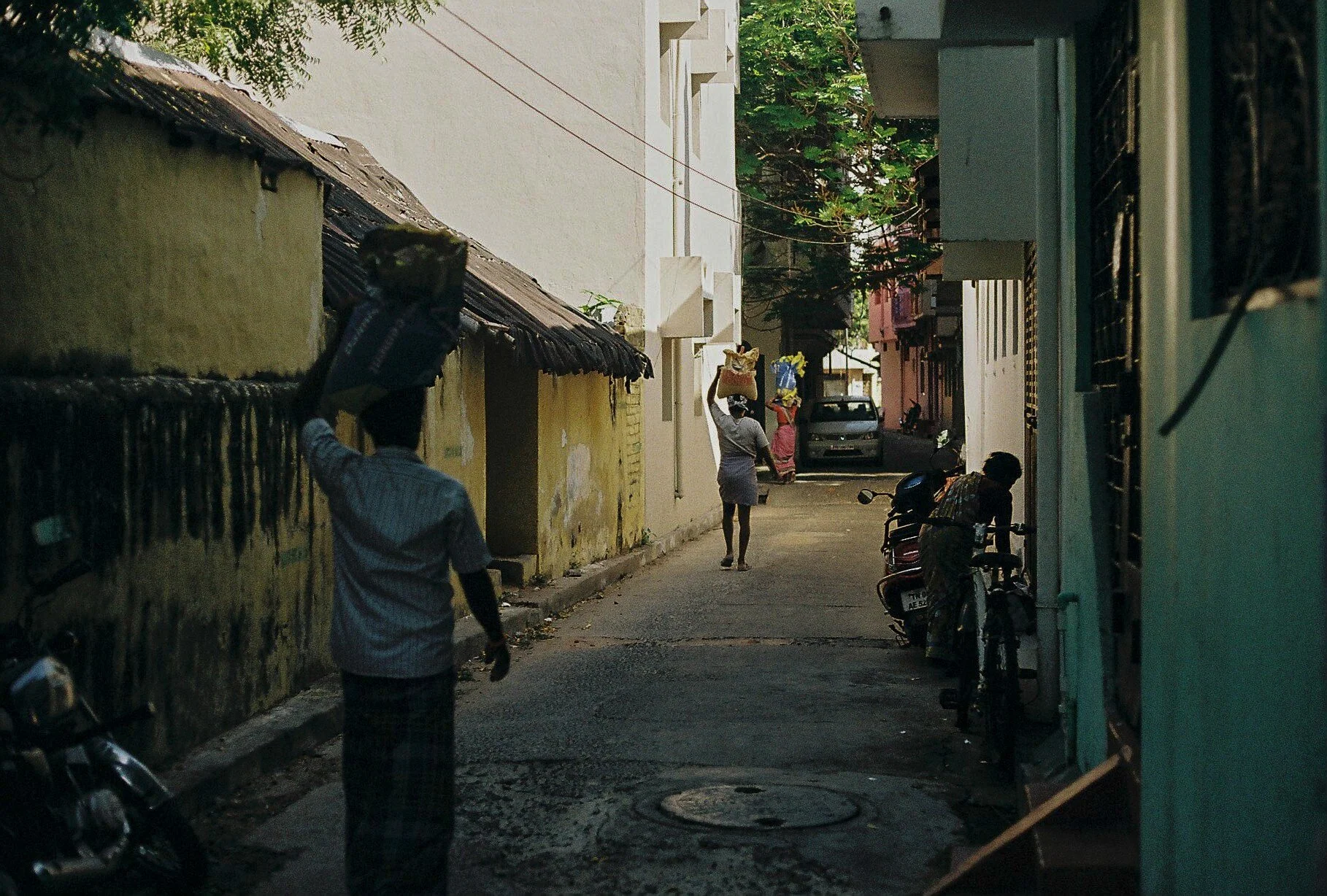Before the city wakes
A wander through Pondicherry, India.
I’ve wanted to travel to India ever since I first picked up one of dad’s National Geographic magazines and saw the intense stares and curious faces looking through me from the rough pages. For a kid growing up on a farm in rural New South Wales, India was beyond my understanding. Until then, most of what I’d learnt about India was from the sweeping generalisations of bored cricket commentators when Australia was playing the masters of spin in a long, boring test series – gee they love their cricket, don’t they? Look at that crowd.
I think most countries need to be visited to be understood, but it’s achingly true of India. My partner and I landed in Chennai on India’s Southeast coat after a relatively painless 24 hours in transit. We jumped straight into a taxi for a 2 hour drive south through quiet, night time streets so we could wake up in the seaside town of Pondicherry – a small city growing around a French colonial port. Pondicherry proudly bears its Franco history, which can be seen in the architecture, tasted on nearly every menu in the city, and heard in the luring calls of restaurant workers trying to strike-up conversation and business – ‘Hello, bonjour. Hi my friend, you want coffee mon amie?’ Always, yes, but I can’t speak French.
I was expecting a lot more people. After all, how on earth do you fit 1.35 billion people into one country and still have quiet cities? I thought every city and town, every street, bus, and cafe would be awash with a sea of faces and, by most accounts, Delhi is. But we were travelling around the south of India and it was no busier than any other country I’ve visited. Even during the manic rush of morning peak hour traffic and the school drop off, Pondicherry is a beautiful city to walk around – even with its nearly total lack of footpaths. It was easy to get off the main roads choked with traffic and amble down side streets lined with grandiose colonial architecture in stark white, wild oranges, dusky pinks and jungly greens. Plus, that’s where the best cafes hid.
I’d been winkingly warned of the fourth dimension of travel in India – the smells – and they were vivid and amazing. Walking the streets means inhaling nostrils full of swirling dust, thick diesel fumes, perfectly spiced curries, steaming masala chai, cigarette smoke, mammal faeces (cow, human, and dog in order of volume and frequency), and body odours. Often, all these smells wash through you in the space of a few footsteps. Sometimes unpleasant but much more often a delightful reminder that we were a pleasantly long way from home. The visual intensity of India is captivating and the smells are at times distracting but together they create such an intense foundation for memories. Ponidcherry’s streets can be conjured for me with the faintest whiff of cardamom pods, dust and cow poo, or garam masala and rice – even now back in Australia.
A gentle easterly sea breeze floated through Pondicherry doing just enough to take the edge off the baking heat I’d heard so much about in the long breaks between action in late 90s test match cricket. Still, walking between 11 and 3 o’clock demanded regular stops in anywhere with shade and a cold drink. Fortunately, Pondicherry has the best cafes in India our guesthouse owner assured us. One thing persevered through the midday heat – good light for taking photographs. The middle of the day is usually the worst time to shoot because the light is harsh and the shadows are deep and dark. But in Pondicherry, the light was constantly filtered through changing combinations of dust, smoke, wispy clouds, and sheer, sweaty excitement. There was so much action at street level, it was a photographic wonderland.
I love seeing people doing mundane tasks – the universal boredom in the faces of people waiting for a bus, the drumroll laughter and fast nattering of friends washing clothes and fish in the street, the laconic stares and loud conversations of tuk-tuk drivers happy to wait in the shade for their next ride. We were staying in the Muslim quarter by the old city, so our day started with the morning call to prayer blaring into the last remnants of night. Shortly after the call to prayer, morning traffic began to fill the sleepy silence. Tuk-tuks, scooters, trucks and all their horns called the sun to rise as the city yawned and stretched.
The busiest and loudest time was just before 8am when the school drop-off filled the streets with a sea of blue and white uniformed school kids walking behind striding parents or snuggled on scooters. Wandering aroundPondicherry and watching the city wake up reminded me of the universality of those bleary-eyed hours before work and school, before the city had its first coffee. It was the same in Pondicherry as it was in Melbourne, Kathmandu, Mexico DF. It was a lovely and oddly reassuring reminder that we may live on different sides of the planet but a commonality runs through our lives.










































A lesson in perseverance and packing more cameras.